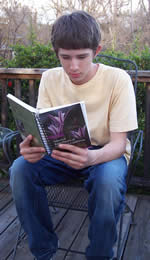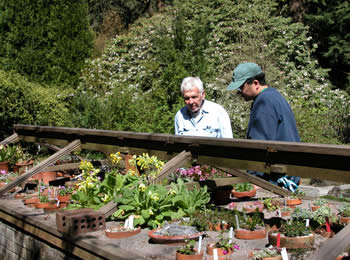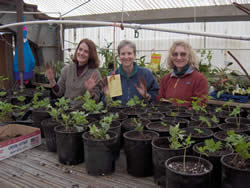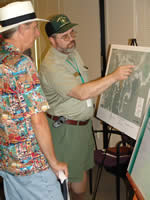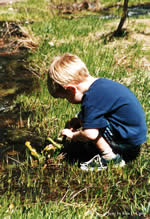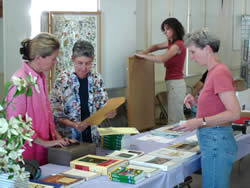USDA Forest Service Celebrating Wildflowers
|
|
|
How Can I Help Rare Plants?Learn for a LifetimeTake some time for yourself to learn as much as you wish about rare plants. Print and electronic media offer a staggering amount of information on every aspect of rare plant biology, distribution, and conservation. So, where do you start? Contact your local public or university library. Library staff can direct you to reference materials useful to the beginner as well as those already knowledgeable about rare plants.
Library staffs are usually aware of local organizations such as garden clubs, your state’s native plant society, Master Gardener’s Program, Master Naturalist’s Program, and other nature-oriented groups that offer public programs about wildflowers, rare plants, pollinators, and plant conservation. If you are fortunate enough to have a botanic garden or arboretum nearby, visit! They are vast resources of information and offer many workshops, field tours, and lectures open to the public. The Center for Plant Conservation has a great guide to plant information resources, including links to all the state native plant societies. Take a class about your local flora from a nearby community college. Attend local Earth Day activities in your town. Check out other rare plant information resources on our website:
Practice Good StewardshipBe a thoughtful consumer and a good citizen of planet earth. Garden responsibly, avoiding species that are invasive and may escape into the local environment. Many rare plants are threatened by competition from invasive species. Use native plants in your gardens. They are adapted to your local environment and do not require the extra care that plants from far away places require. When incorporating native plants into your landscape make sure they are not wild-collected. Some plants, such as cacti, orchids, and others have become rare because of overzealous collectors. When hiking through your favorite natural areas, enjoy the native wildflowers and make note of their preferred habitats, but do not collect them from the wild. Most native plants will not survive being transplanted. (See Wildflower Ethics) Garden-worthy rare plants are often available from seed exchanges and native plant nurseries. Your local native plant society can provide you with a list of reputable local nurseries and garden centers that sell native plants.
Be an AdvocateFind out what is planned for your neighborhood, your city, your state, and your national forests and grasslands. These are public lands, your lands. Speak up for conservation of native plants, rare plants and their habitats. The agencies responsible for the management of our public lands invite public comment on their plans for managing, developing, and regulating public lands. Embrace your civic privilege and make your voice heard. JoinJoin a group that supports rare plant conservation. At local, state, and national levels there are many organizations that need your support, and will welcome you as a member. Attending meetings of these organizations will be an enjoyable and enlightening opportunity as you meet other folks who are concerned about rare plants. The fellowship you will experience will inspire you, and your enthusiasm will inspire others, to care for rare plants.
Share Your Knowledge and PassionOthers that came before you led wildflower walks, taught local flora classes, and in so many ways shared their knowledge and passion about native plants, especially rare plants. They did so willingly. Now it is your turn to carry the torch, to pass along the knowledge and passion needed to keep our native flora thriving. Invite your family and friends along for a walk through a wildflower woods or meadow. Your enthusiasm will be catching. Volunteer to make a presentation in your town, especially at your local elementary or middle school. Help children make deep connections with nature that will last them all their lives. Become a Citizen ScientistNo public land management agency has the staff or the budget to carry out all the tasks necessary to conserve and manage native plants. Many agencies and organizations provide training enabling people to conduct rare plant monitoring, give public programs, and lead public interpretive walks.
DonateGive what only you can give: your time, your books, and your wildflower photos. |
|
| NOTE: PDF format links require the Adobe Acrobat Reader to view. | |
| top | Disclaimers | FOIA | Privacy Policy | Quality of Information | Photo Credits & Use |
Location: http://www.fs.fed.us/wildflowers/rareplants/help.shtml
Last modified: Friday, 16-May-2008 13:44:50 EDT
